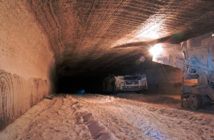Considering the uncertainties created by the Arab Spring and the fiscal turmoil in Europe – its main trade partner – Morocco’s economy is performing remarkably well. The latest annual African Economic Outlook report predicts GDP growth of 4.5% in 2012 and 4.8% in 2013, on the back of robust domestic demand and steady progress in agricultural and non-agricultural production.
The Moroccan government has received praise for its commitment to economic liberalization and structural reform, and the adoption of a new constitution. Early legislative elections meant it was able to head off local manifestations of the Arab Spring movement. But social challenges remain, including persistent inequality and a high unemployment rate – especially among young graduates and women.
Late last year, MSCI placed Morocco on review for a downgrade to frontier status, after a decade as one of MENA’s two emerging markets, because of limited liquidity caused by high valuations.
However, such a move could have a silver lining for the market by giving it a much larger index share, explains Youssef Lahlou, a Casablanca-based portfolio manager at Silk Invest.
“Morocco has been threatened with reclassification because of lack of liquidity in recent years – and last year in particular, when average daily volume dropped by more than 30%,” said Lahlou. “But that could be a positive development, because Morocco would represent more than 5% of the frontier index compared to less than 0.1% of the emerging index. With the growth in assets under management of international frontier funds, this would boost foreign investment.”
Market correction and profit-taking
Morocco was the worst performing MENA geography in 2012 in terms of equities, with a fall of 16.5% over the year, and Lahlou says there has been large scale profit-taking in recent months.
“Many companies are trading at deep discounts and local institutional investors are moving to fixed income,” he adds.
Silk Invest has significant exposure to Morocco through its Africa Lions and Arab Falcons equity funds, as well as its frontier market equities fund and an emerging market fund it co-manages with OFI Asset Management.
In terms of sectors, Lahlou likes real estate, especially social housing – his top Moroccan holding is Douja Promotion Groupe Addoha – and also favors the banking sector, especially institutions that are expanding outside the country such as Attijariwafa Bank and BCP.
Slim Feriani is CEO of Advance Emerging Capital, a multi-manager investor in emerging and frontier markets which is currently allocating less than 1% to Morocco. He strikes a more cautionary note on political risk, warning that the jury is still out as to whether the country can remain fully insulated from what is going on in neighboring North African countries, including the turmoil in Mali.
He added that last year’s stock market correction was not only the result of deteriorating sentiment arising from political and social risks, but also a slowing economy.
“Weaker demand from the Eurozone will continue to weigh on exports, tourism and remittances. In addition, Morocco suffers from sizeable and growing deficits,” said Feriani.
However, he said that the Moroccan equity market and asset management sector is among the biggest and most sophisticated in Africa and there remain some interesting investment opportunities for long-term investors.
“Our preference is for banks such as Attijariwafa, which is rapidly and successfully expanding in Africa, retailer Label Vie to tap into the growing middle class and Douja Promotion Groupe Addoha, which has established itself as the champion of low-cost housing in the region.”
He says corruption and the significant size of the informal sector should be addressed in order to encourage foreign direct investment, and adds that a free floating currency would also go a long way to make Morocco more attractive to foreign investors.
The local stock exchange has been “priced for perfection” for a long time on the back of local trapped liquidity, which reflects foreign exchange controls on local investors, concluded Feriani. “As a result, last year’s correction brought valuations back closer to the average of emerging and frontier markets.”
Co-branded fund launches on the way
Most Moroccan funds are subscribed by domestic institutional investors and the domestic asset management industry is valued at approximately EUR 20 billion, which makes it one of the largest in Africa.
Lahlou suggests that foreign investors need to gain a better understanding of the market, while accepting that Moroccan companies don’t do enough to promote themselves to overseas investors through roadshows and investor conferences. “There is also a lack of visibility. Companies tend to report twice a year rather than on a quarterly basis, which does not give analysts enough information to work on their valuations.”
He believes the efforts of the government and the Moroccan Finance Board to establish Casablanca as a major financial center will help position it as a gateway to Africa and says many fund managers are thinking about setting up co-branded funds.
“There will be new launches in 2013 around indexed funds, capital guaranteed funds, co-branded funds and funds targeting private equity, listed equities and bond markets in Africa.”
It remains to be seen whether this explosion of activity will attract new investors to buy into the story of the North African nation.
© MENA Fund Manager 2013







